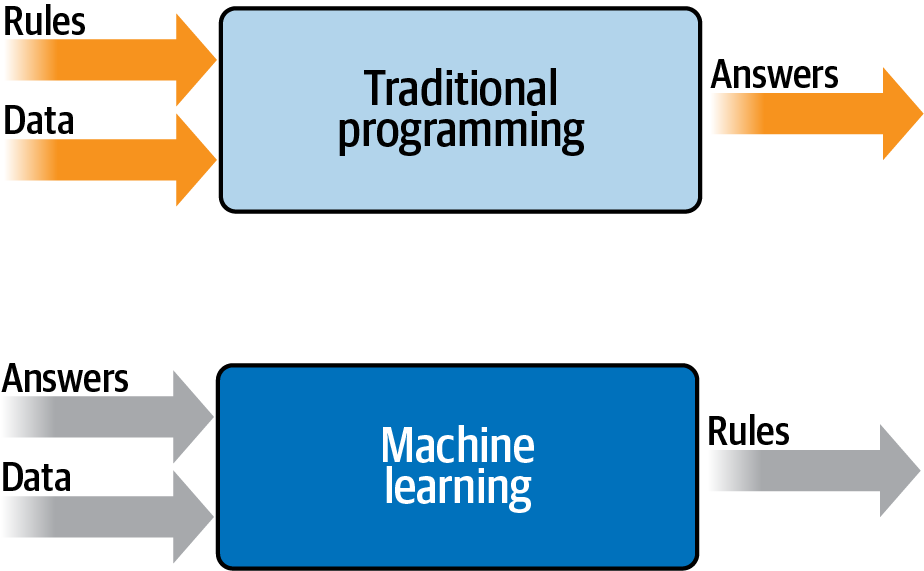Chapter 20. AI Ethics, Fairness, and Privacy
In this book you’ve taken a programmer’s tour of the APIs available in the TensorFlow ecosystem to train models for a variety of tasks and deploy those models to a number of different surfaces. It’s this methodology of training models, using labeled data instead of explicitly programming logic yourself, that is at the heart of the machine learning and, by extension, artificial intelligence revolution.
In Chapter 1, we condensed the changes this involves for a programmer into a diagram, shown in Figure 20-1.

Figure 20-1. Traditional programming versus machine learning
This leads to a new challenge. With source code, it’s possible to inspect how a system works by stepping through and exploring the code. But when you build a model, even a simple one, the outcome is a binary file consisting of the learned parameters within the model. These can be weights, biases, learned filters, and more. As a result, they can be quite obscure, leading to difficulty in interpreting what they do and how they work.
And if we, as a society, begin to depend on trained models to help us with computing tasks, it’s important for us to have some level of transparency regarding how the models work—so it’s important for you, as an AI engineer, to understand building for ethics, fairness, and privacy. There’s enough to learn to fill several books, so in this chapter ...
Get AI and Machine Learning for Coders now with the O’Reilly learning platform.
O’Reilly members experience books, live events, courses curated by job role, and more from O’Reilly and nearly 200 top publishers.

